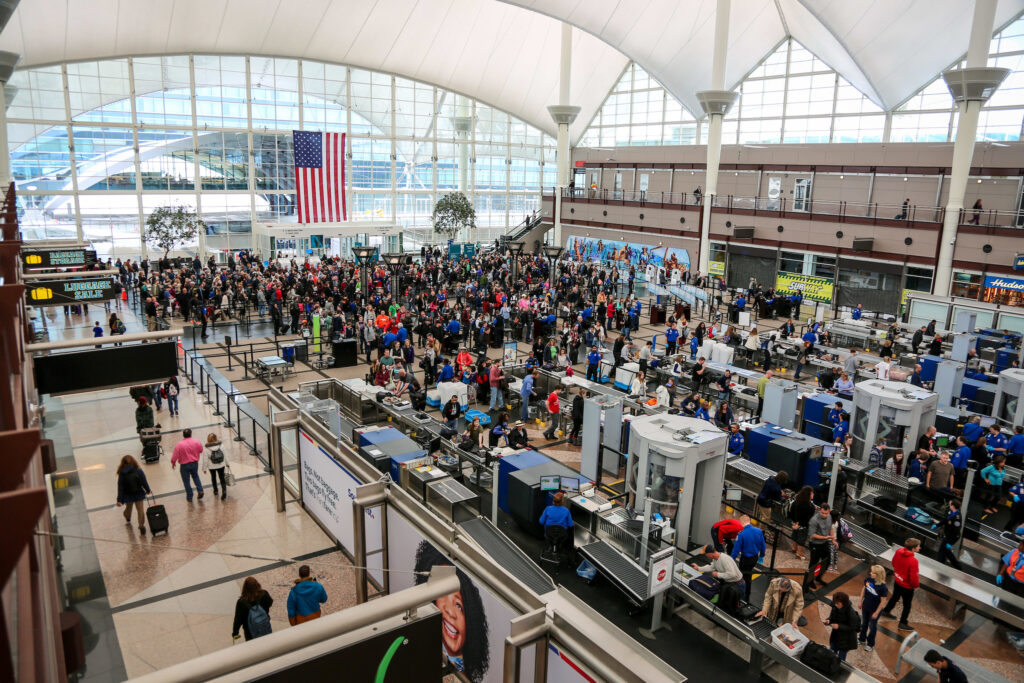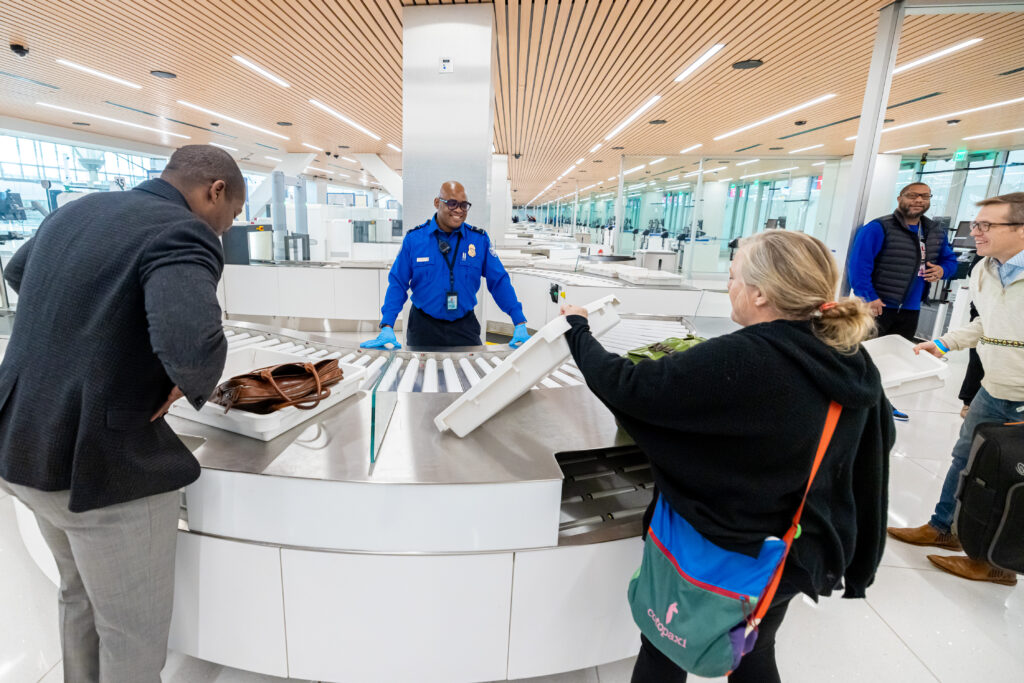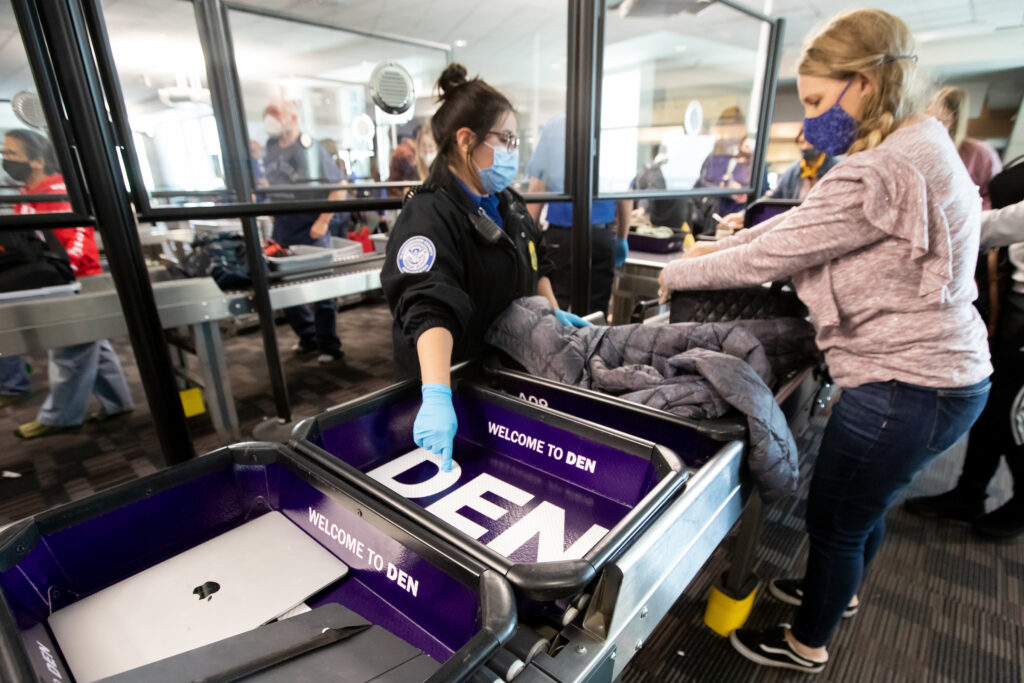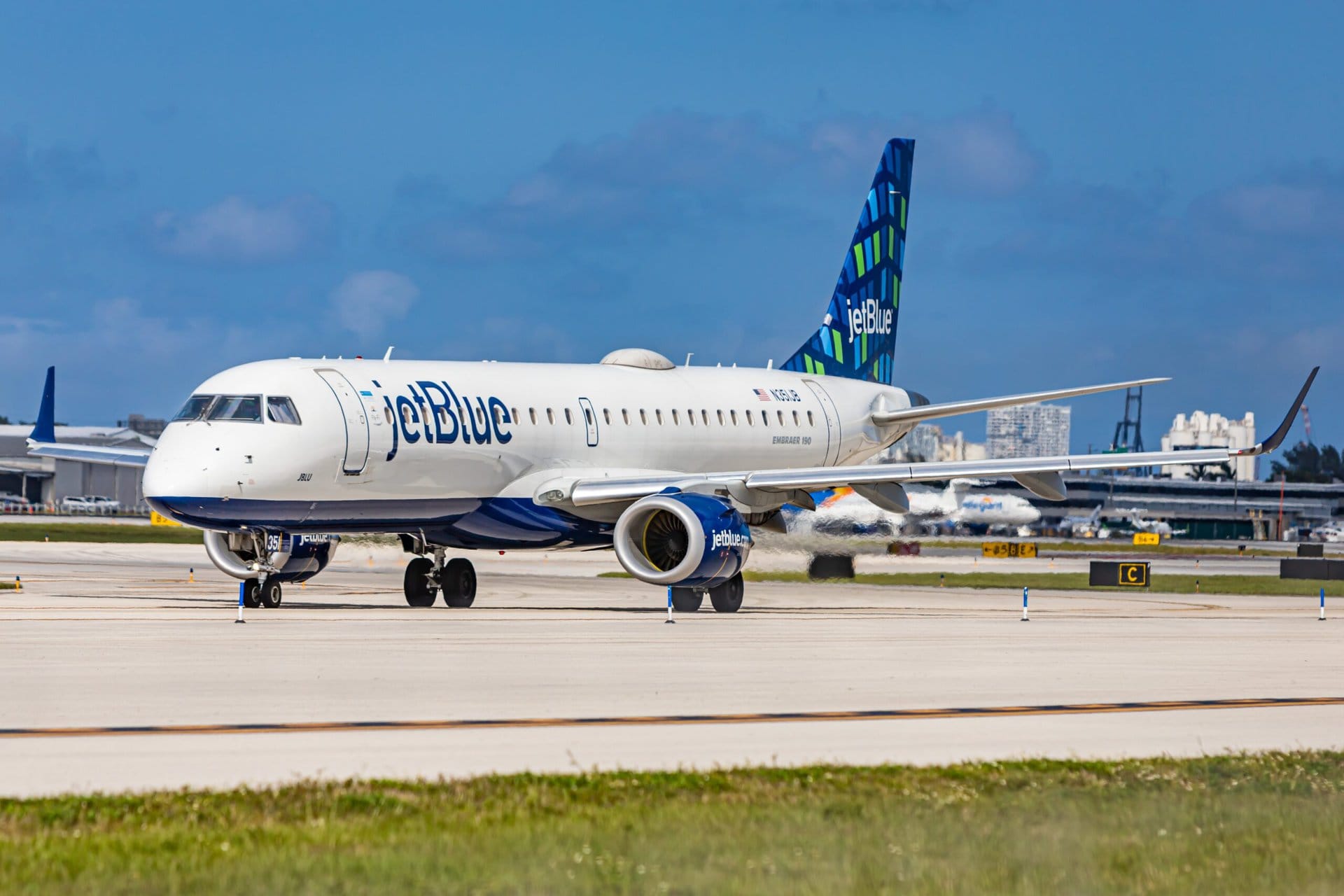TSA Trials New Walk-Through Scanners and Liquid Rule Changes
With record-breaking passenger volumes, TSA and DHS are collaborating on new technology to streamline airport security while enhancing safety
by George Gomez
January 14, 2025

Photo: Courtesy of PNNL
In a year when the Transportation Security Administration (TSA) screened an unprecedented three million passengers in a single day, the need for faster, more efficient airport screening has never been clearer.
To address this growing demand, the Department of Homeland Security’s (DHS) Science and Technology Directorate (S&T) is actively developing next-generation screening systems to improve security and passenger convenience.

Photo: Courtesy of Denver International Airport.
Testing for these innovations is already underway at the S&T’s Transportation Security Laboratory (TSL) in Atlantic City, New Jersey.
Rethinking Airport Security
At the heart of this initiative is the Screening at Speed Program, which partners with TSA to enhance detection capabilities while streamlining the airport experience.
A key component of this program is High Definition-Advanced Imaging Technology (HD-AIT), developed in collaboration with the Department of Energy’s Pacific Northwest National Laboratory (PNNL).

Photo: Courtesy of PNNL
Unlike traditional metal detectors, the S&T explains that HD-AIT uses non-harmful millimeter waves to screen passengers for concealed items, including non-metallic threats. These waves, 10,000 times weaker than a typical cell phone signal, are safe and don’t penetrate the skin.
Instead of relying on human reviewers, the system processes data through an algorithm, ensuring privacy by displaying results on a generic human figure.
According to S&T, one of the major advantages of HD-AIT is its potential to streamline the security process. “Integrating HD-AIT into standard airport screening lanes could allow passengers to keep light sweaters, jackets, and even shoes on during screening,” say S&T officials, promising a significant reduction in checkpoint delays while enhancing detection accuracy and reducing false alarms.
From Prototypes to Real-World Solutions
Two versions of the HD-AIT system are being developed: a stand-alone passenger screening system and retrofit-kits designed to upgrade existing airport scanners without requiring full replacements.
Notably, this approach saves time and money while bringing new capabilities to current systems. In May 2024, a prototype retrofit-kit was delivered to TSA’s Systems Integration Facility in Arlington, Virginia, for near-operational testing—a critical step before public demonstrations begin.
Additionally, a prototype shoe scanner has been created to eliminate one of the most frustrating aspects of airport security: removing shoes.

Photo: Courtesy of PNNL
As explained by S&T, using millimeter waves similar to HD-AIT, the shoe scanner can detect concealed items within seconds without requiring passengers to remove their footwear. Future iterations may incorporate the scanner into the floor, allowing simultaneous scanning of passengers and their shoes.
Real-Time Screening
Building on the success of HD-AIT, the Screening at Speed Program is also developing Real-Time Advanced Imaging Technology (Real-Time AIT).
Unlike current systems that require passengers to pause for scanning, Real-Time AIT enables continuous screening as travelers walk past modular panels, eventually paving the way for checkpoint-free security and significantly increasing throughput and reducing the need for pat-downs.

Photo: Courtesy of PNNL
Real-Time AIT has already earned significant recognition, including an R&D 100 Award in the Software/Services category in 2024. The system’s modular design allows easy integration into various checkpoint configurations, offering flexibility for future airport security setups.
The Liquid Hassle
Along with the inconvenience of navigating TSA checkpoints, taking off shoes, and undergoing pat-downs by officials, travelers must also adhere to the notorious 3-1-1 rule, which limits liquids in carry-on luggage to 100ml containers contained within a single 1-liter clear bag.
This measure, introduced after 9/11, has long been a major stressing point for passengers forced to discard toiletries or purchase travel-sized items to meet the strict regulations.

Photo: Courtesy of Denver International Airport
However, relief may soon be on the horizon. Reports suggest that the TSA is exploring significant changes to liquid restrictions, driven by advancements in security technology—specifically, the adoption of advanced computed tomography (CT) scanners.
Unlike traditional X-ray machines, these CT scanners provide 3D imaging capabilities, enabling more detailed analysis of bag contents. With these scanners in place, passengers may be allowed to carry full-size liquids without posing a security risk.
Countries in Europe, including the UK, have already begun easing liquid restrictions after deploying similar technology. The U.S. appears to be following suit, and though the timeline remains uncertain, the shift toward allowing larger liquid quantities in carry-ons is seen as a matter of when not if.
What Might Change for Travelers
The updated liquids policy, once implemented, is expected to include several key liquid items that will no longer face the same scrutiny at checkpoints.

Photo: Courtesy of Denver International Airport.
While exact details have yet to be finalized, likely candidates for inclusion in the relaxed regulations are:
- Full-size bottles of personal hygiene products like shampoo and lotion
- Baby essentials, such as formula, milk, and food
- Liquid medications and prescribed creams
- Sanitizers, hydroalcoholic gels, and nasal sprays
The change will be especially welcomed by families, frequent flyers, and international travelers who have grown accustomed to the rigid rules.
Though safety will remain paramount, with TSA officers potentially testing certain liquids when needed, the reduced hassle will streamline the screening process.
What’s Next?
While the widespread deployment of the advanced new systems may still be a few years off, plans for limited public demonstrations are already taking shape.
The TSA is gearing up to conduct operational assessments of the HD-AIT system soon and showcased the shoe scanner at the 2025 Consumer Electronics Show, allowing attendees to get a firsthand look at how the technology operates.

Photo: Courtesy of DHS and Science and the Technology Directorate
In the meantime, testing continues at the Transportation Security Laboratory to ensure these systems meet the TSA’s rigorous security and performance standards, providing an encouraging glimpse of what the airport experience might look like in the future—faster, more efficient, and less stressful for travelers.
By incorporating cutting-edge technology, the TSA strives to balance safety and passenger convenience better. Though widespread adoption across the nation’s 430 airports and over 2,000 screening lanes will take time, these initiatives should eventually align American airports with global standards.




